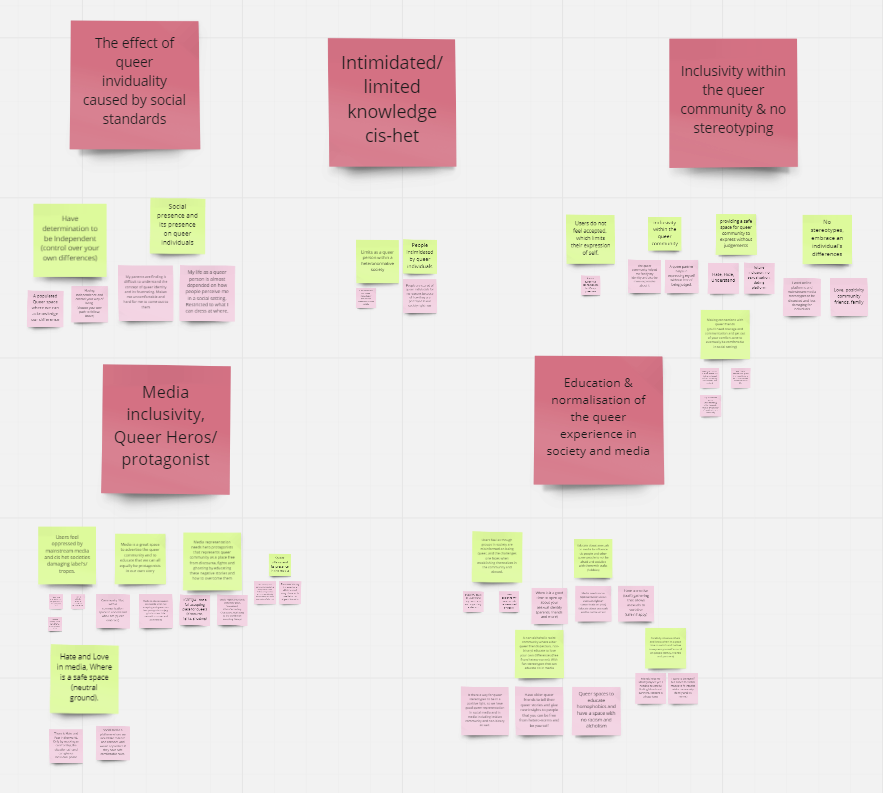Queer Stories Full UX Research & Process
Section 1: Background Research & Concept Proposal
Online Ethnography Summary
Competitor Analysis
Market Analysis
Questionnaire Response



Affinity Diagram for Key Theme Decisions




Inspiration Board
Crazy 8s
Incorporated Crazy 8s as a way to build our concepts from the previous insipration board. We conducted around 32 rough sketches to illustrate our ideas. This section will show the highlighted drawings of each idea.
Concept 1: Anonymous
Concept 3: Visual Dating
Concept 5: Museum
Concept 7: Love Message
Concept 2: Vandalise Thoughts
Concept 4: Music Festival
Concept 6: Music Festival
Narrowing Down Concepts
Out of the 7 concepts shown previously, we narrowed this down to 5 concepts. From here we narrowed it down to final 2 concepts. These 2 concepts are Anonymous Speed Friending & Vandalising Thoughts.
Personas & Empathy
We created personas to help us uncover which concepts to move on with.
Concept Testing
We put our personas into a storyboard scenario using the 2 concepts we selected. Through this we narrowed it down to the final concept which became a mix of several concepts: an installation gallery to share the stories and experiences of queer community.
Anonymous Speed Friending Concept
Section 2: User Research & Prototyping
As we decided on the final concept, we moved onto doing a more indepth analysis for our target users. We interviewed 7 queer individuals about the effects of queer communities on their lives. We formed a affinity diagram based on all the interviews to see problems and themes.
Summary Affinity Diagram of all interviews
We next moved onto doing the Service Blueprint, which allowed us to fortify the strcture of our concepts to test on our Decision Martrix.
Anonymous Dating Concept
Love Message + Interactive Wall Concept
Decision Matrix on the 2 Concepts
From this, we finally decided to stick with the Love Message + Interactive Canvas as our final concept. Now it was time to start sketching our prototype.
After sketching our concept, we moved onto the low fidelity prototype.
We used the low fidelity protoype to test 3 of the previous interviewees. We condensed it down to a summary.
With consideration from the testing, we created the mid fidelity prototype.
From here, we implemented User Journey Maps to understand user emotions and actions throughout the product experience.
User Journey Map using Persona






The User Journey Map displayed personas presumed actions and emotions which can be used in fortifying the final prototype.






































